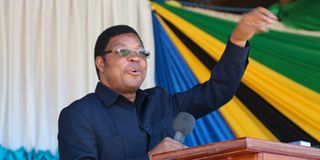PM to grace 60th birthday of Olduvai early man

Prime Minister Kassim Majaliwa
Arusha. Prime Minister Kassim Majaliwa is expected to be guest of honour at the climax of celebrations to mark the 60th anniversary of the discovery of the skull of the oldest man in the world.
Tomorrow (July 17) will be exactly 60 years since famous paleoanthropologists and archaeologists Louis Leakey and his wife Mary Leakey discovered a human skull of what came to be known as Early Man at the Olduvai Gorge in Ngorongoro Conservation Area, 250 kilometres west of Arusha.
Scientists, prehistory researchers and tourists will from July 17 gather in Arusha, then at Olduvai Gorge to celebrate the milestone discovery of Zinjanthropus in 1959.
Prof Audax Mabula, the anniversary committee chairman, told reporters yesterday that the premier is also expected to grace the inauguration of the museums for those researchers.
He said in it, the museums which were being preserved by the Ngorongoro Conservation Area Authority (NCAA) NCAA, were various tools used by those researchers, the house they were sleeping in and the car they were using.
“These are historical museums recognised worldwide….we are naturally proud that Tanzania was the site of this significant discovery,” noted Prof Mabula.
The anniversary, which goes under the theme “Let’s be proud of our heritage”, will attract researchers and both domestic and foreign tourists from all over the world to visit the excavation site at Olduvai Gorge.
NCAA cultural heritage manager Joshua Mwaikunda said the visiting to the site would kicked off July 17. This will go parallel with the workshop of researchers from various corners of the world.
“Adults and children will have to pay Sh30,000 and Sh15,000 as transport costs from Karatu,” noted Mr Mwaikunda.
NCAA public relations manager Joyce Mgaya called on Tanzanians and foreigners to visit the Olduvai Gorge museums and enjoy the natural wonders of the entire Ngorongoro Conservation Area.
Olduvai Gorge is a Unesco World Heritage Site attracting 60,000 international visitors annually, most of them researchers and students.




